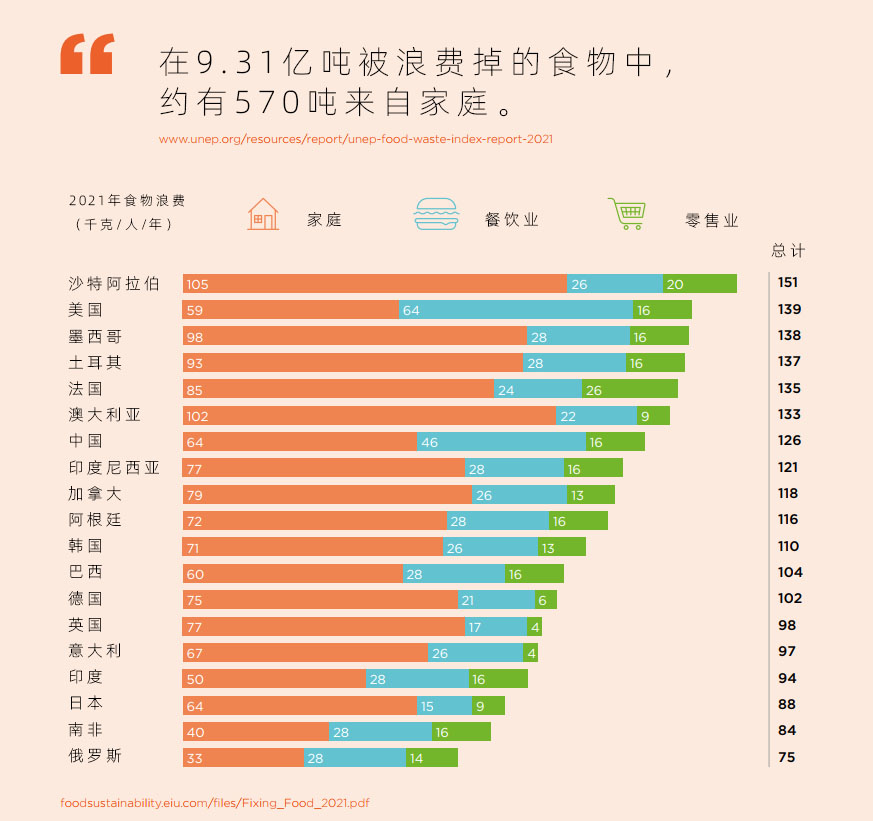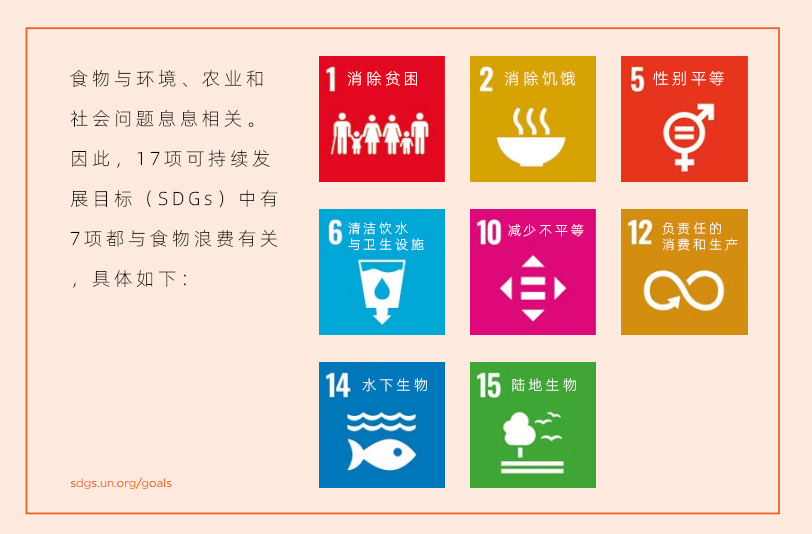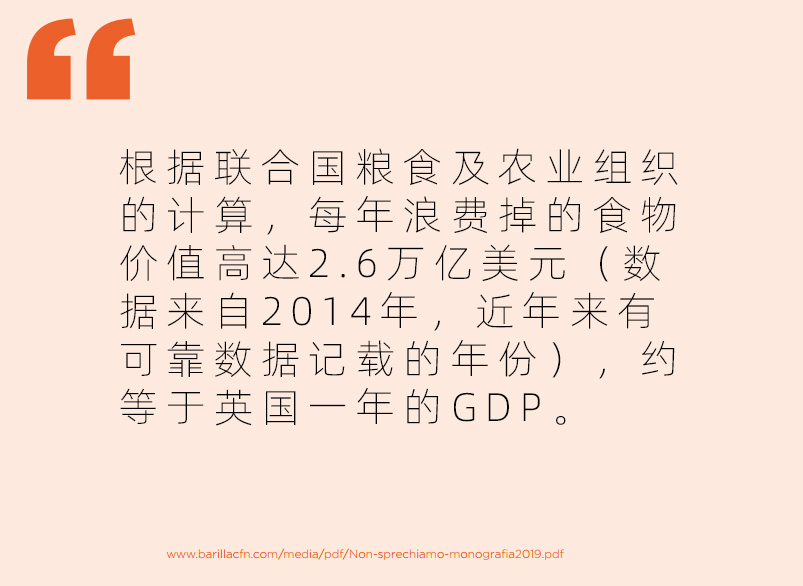此文章来自奥马冰箱白皮书第15篇。
A third of global food production is lost in the production chain or wasted in the chain of consumption, with severe consequences in the social, environmental and economic spheres. Reducing the volumes of this shocking waste is one of the objectives of the 2030 Agenda for Sustainable Development.
在生产和消费过程中,全球有三分之一的粮食被损失、浪费,对社会、环境和经济造成了严重影响。《2030年可持续发展议程》的目标之一就是减少这一浪费。
It is estimated that global food production is sufficient to feed 10 billion people, more than 2 billion more than the current world population. In contrast, the FAO annual report - The State of Food Security and Nutrition in the World - reveals that in 2020 between 720 and 811 million people in the world went hungry, 161 million more than in 2019. In the same period almost 2.37 billion individuals did not have access to adequate nutrition, 320 million more than the previous year.
据估计,全球粮食产量可以供养约100亿人,比目前世界总人口多20多亿。但联合国粮食及农业组织发布的年度报告《世界粮食安全和营养状况》显示,2020年全球有7.2亿至8.11亿人面临饥饿,比2019年增加了1.61亿;有23.7亿人营养不良,比2019年增加了3.2亿。
This problem particularly affects children under 5: hunger or malnutrition cause stunted growth (149.2 million), wasting (45.4 million) or overweight (38.9 million), particularly in Africa and Asia. Obesity in adults has also registered an increase on a global level, with no sign of a reverse trend.
这个情况对5岁以下儿童尤为不利:饥饿或营养不良会导致生长发育迟缓(1.492亿)、消瘦(4540万)或超重(3890万),尤其是在非洲和亚洲。在全球范围内,成年人的肥胖率也呈上升趋势,而且尚无回落的迹象。
Among the leading causes of the nutritional problems that are the scourge of the world’s population, food waste is especially striking due to the serious nature of its implicit paradox.
世界各国都在与营养问题作斗争,但矛盾在于,食物浪费现象屡见不鲜,因而引起了广泛关注。
“The annual global average of 74 kg per capita of wasted food is remarkably similar in high, medium-high and medium-low income countries.”
在高收入、中高收入和中低收入国家,平均每人每年浪费74公斤食物。
专业名词解释
Food loss refers to the decrease in the amount of edible food along the supply chain of food for human consumption. It occurs in the production, post-harvest and processing stages of the supply chain.
食物损失指在消费者的食物供应链中,可食用食物数量的减少。这一现象出现在供应链的生产、收获后和加工阶段。
Food waste refers to losses occurring at the end of the supply chain during retail sale and final consumption, with reference to the behaviour of retailers and consumers.
食物浪费指在零售和最终消费过程中食物的损失,发生在供应链末端,与零售商和消费者的行为有关。
The waste or loss of “food” is measured only with regard to products intended for human consumption, excluding feed and inedible parts of products.
以上提到的“食物”仅指供消费者食用的产品,不包括饲料和产品中不可食用的部分。
→www.fao.org/3/i2697e/i2697e.pdf

In its report - Food Waste index Report 2021 – the FAO estimated that a third of the global food volume produced is lost in the production chain, or wasted in the post production network. Of the approximately 931 million tons of food waste generated in 2019, 61% is produced in the family setting, 25% in catering, while 13% derives from the retail sector. In global terms this waste represents 17% of world food production, with responsibility lying 11% with families, 5% with the catering sector, and 2% with retail.
联合国粮食及农业组织在《2021年食物浪费指数报告》中表示,全球三分之一的食物在生产环节受到损失或在消费环节遭到浪费。2019年,全球食物浪费总量达9.31亿吨,其中61%来自家庭,25%来自餐饮业,剩下的13%来自零售业。在世界范围内,食物浪费占世界粮食产量的17%,其中11%来自家庭,5%来自餐饮业,2%来自零售业。
Although the data does not allow for a solid comparison over time, food waste by consumers (families and caterers) appears to be more than double the previous estimate by FAO in 2011.
尽管没有可靠的数据进行对比,但由消费者(家庭和餐饮业)造成的食物浪费几乎是联合国粮食及农业组织2011年预测值的两倍以上。
Compared with previous evaluations, new evidence has emerged:
对比先前的观点,有新证据表明:
1. The production of domestic food waste – average per family – is largely similar and significant in high, medium-high and medium-low income countries, in contrast to previous statements, which concentrated on consumer food waste in developed countries, and the food production, stock and transport losses in developing countries;
高收入、中高收入和中低收入国家的食物浪费都很严重,但平均每个家庭浪费掉的食物总量差异不大,这和先前的观点有所出入。人们原本倾向于认为,在发达国家,消费者浪费食物;而在发展中国家,食物大多是在生产、储存和运输过程中损失掉的;
2. The food waste generated by families and caterers appears to be more than double previous FAO estimates.
来自家庭和餐饮业的食物浪费几乎是联合国粮食及农业组织先前预测值的两倍以上。
Food waste is one of the 169 targets of the 17 Sustainable Developments Goals (SDGs) declared in 2015 by the United Nations. The topic is included in Objective 12: “Responsible consumption and production”, and specifically in target 12.3: “By 2030, halve per capita global food waste at the retail and consumer levels and reduce food losses along production and supply chains, including post-harvest” www.fao.org/sdg-progress-report/2021/en/.
联合国于2015年通过了17项可持续发展目标(SDGs),其中涵盖169个具体目标,食物浪费为第12项目标:“负责任的消费与生产”,其第12.3条指出:“到2030年,将零售和消费环节的全球人均粮食浪费减半,减少生产和供应环节的粮食损失,包括粮食收割后的损失”。
www.fao.org/sdg-progress-report/2021/en/。


The reduction of food waste has a positive effect on people and the planet. It implicitly improves food security, has a positive impact on climate change, and contributes to reducing the exploitation of soil and water, as well as the stress on waste disposal systems. The Objective of Sustainable Development 12.3 is to halve food waste by 2030 in all phases of the supply chain.
减少食物浪费对人类和地球都有积极的影响。这包括改善粮食安全、缓解气候变化、减少对土壤和水源的开采,释放废物处理系统的压力。可持续发展目标第12.3条提出,到2030年,将整个供应链上的食物浪费减半。
版权归广东奥马冰箱有限公司所有,转载需注明出处。





























